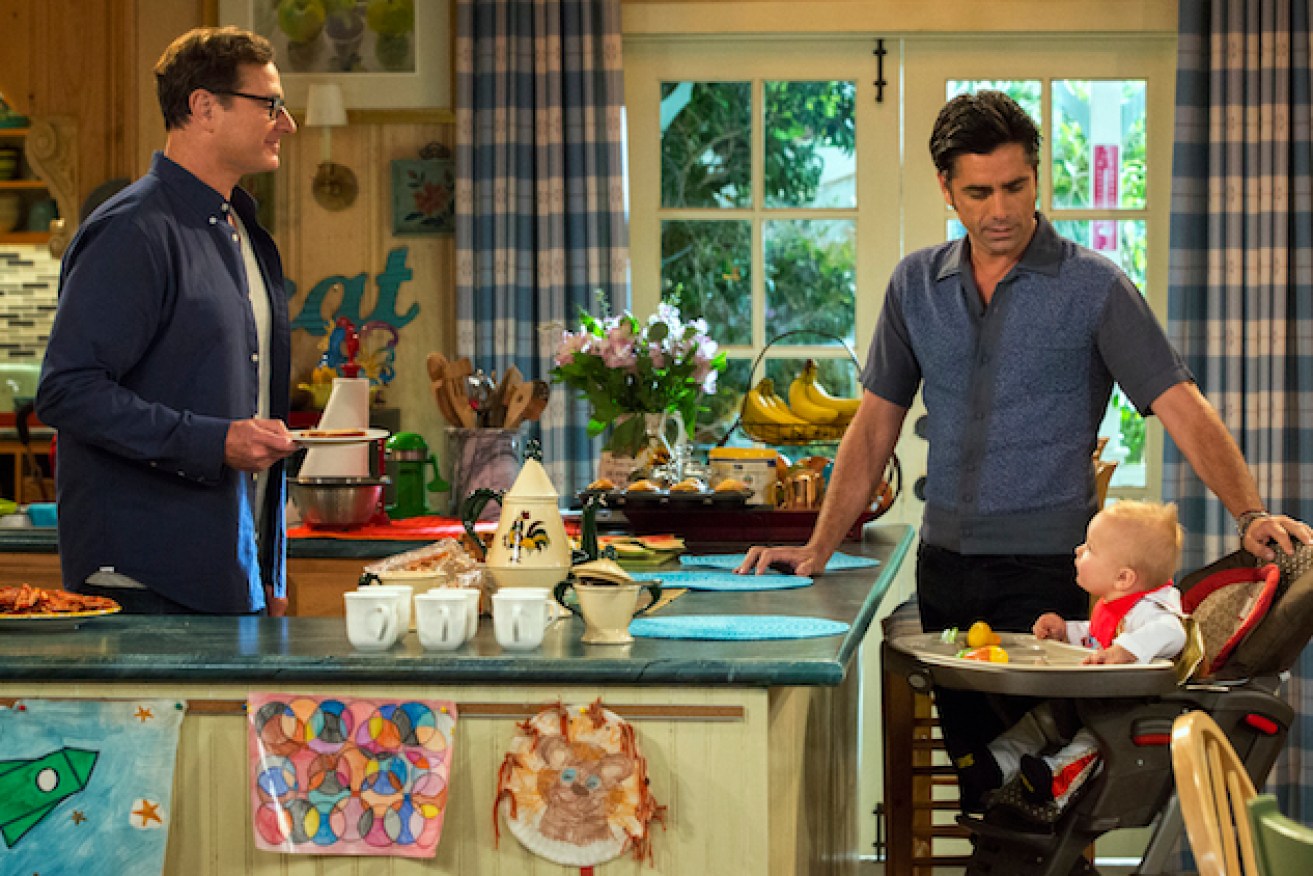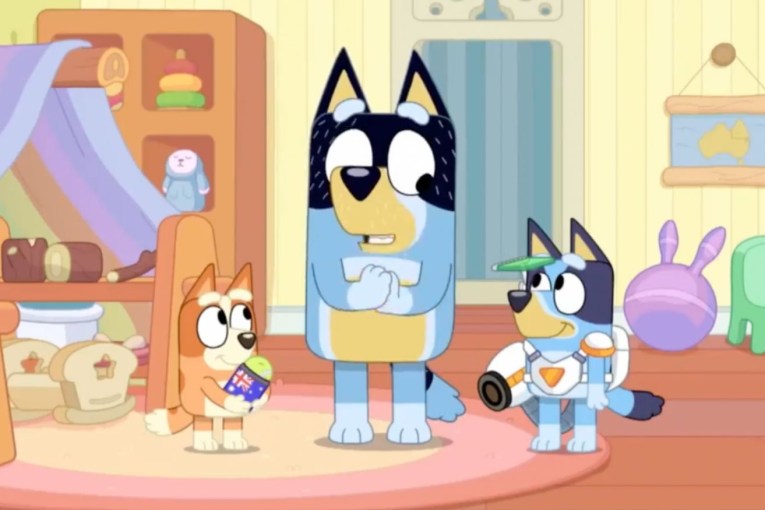The worst show on Netflix just got renewed


Bob Saget (left) and John Stamos do their best to keep the dream alive. Photo: Netflix
When it first hit our screens in 1987, the original Full House became an instant classic because of its family-friendly themes, loveable characters and comforting, reliable format.
This was reflected by its successful eight-season run until its final episode in 1995, followed by the announcement, in 2015, that Netflix would attempt a remake.
They should have left it at eight seasons.
• Shows to binge-watch on Netflix, Stan and Presto
• What your Netflix use says about your love life
• New streaming service to fight Netfix, Foxtel in Australia
Despite having all the necessary components, Netflix’s reboot attempt, Fuller House, doesn’t feel like a real TV show. Rather, it’s like a gimmicky one-off reunion special that’s run way over time.
We pick up about 20 years after where the Tanner family left off. The kids have grown up, the adults have aged and the Olsen twins are nowhere to be seen (smart girls) but the show’s set and premise haven’t changed.
Just as Danny Tanner (Bob Saget) called on his best friend and brother-in-law to help him raise his kids after his wife’s death, his eldest daughter, D.J. Tanner (Candace Cameron Bure), is forced to turn to her sister and childhood friend for parenting assistance after her husband passes away.
Aside from the fact that this is an extremely unfortunate and bizarre case of history repeating itself, the execution of this decidedly stale approach is messy, idiotic and vaguely unsettling.

D.J. Tanner (second from the left), Kimmy Gibbler (centre) and Stephanie Tanner (right) haven’t changed since their teenage years. Photo: Netflix
The Hollywood Reporter labelled the show’s uncomfortable pilot “painful”, while The New York Times described the series as a “maudlin reminder of the ceaseless march of time and your inevitable demise”.
Are these descriptors a bit heavy-handed for what is essentially an innocent family sitcom?
No – unfortunately Fuller House deserves everything it gets and more.
We’ve come to expect great things from Netflix, and television in general, thanks to clever, cinema-quality series like House of Cards or Orange Is the New Black.
Perhaps Fuller House would have been passable in the era of shows like Friends or Frasier, but thrown into the highly competitive landscape of TV today it seems like a bad joke.
The characters, particularly the women, are lazily constructed cliches played by well-meaning former stars delivering cheesy punchlines with almost maniacal enthusiasm. The only person not overacting is the baby.
The actors regularly break the fourth wall to make lame throwback references or bemoan the absence of Michelle Tanner (aka Mary-Kate and Ashley Olsen) and the studio audience essentially scream with joy every time a familiar face appears.
Basically, the Tanners are Pavlov and the studio audience are their drooling dogs, eagerly awaiting the nostalgic fulfilment promised to them by the familiar surroundings.
However, by far the most unsettling thing about the Tanner house is that it exists in a bubble that is seemingly impenetrable by the horrors of the outside world.
Indeed, Vox.com‘s Todd VanDerWerff summed up this phenomenon perfectly when he explained: “Watch enough Fuller House and you’ll start to realize that many of the physical laws of reality we hold so dear simply don’t apply to the Tanners of San Francisco.
“Reality warps itself around them, drawn toward their center of gravity. Horrible things – disease and death and sorrow – can happen to them, but nothing truly affects them.”
The death of D.J.’s husband, and its resulting effect on her and her kids, is skimmed over in order to focus on more important issues, like who gets what bedroom or what to wear on a girls’ night out.

Bob Saget (left) and John Stamos do their best to keep the dream alive. Photo: Netflix
But the scariest part? It seems to be working – Fuller House has already been renewed for a second season.
Clearly people are watching this drivel, and it doesn’t stop there.
According to Netflix’s chief content officer Ted Sarandos, Adam Sandler’s ill-advised comedy The Ridiculous 6 is the service’s most-watched movie ever.
To give you some context, the satirical Western received a 0 per cent rating on review site Rotten Tomatoes and Variety deemed it “so lazy and aimless, it barely qualifies as parody”.
This, plus the renewal of Fuller House and the mere existence of Wet Hot American Summer, suggests Netflix’s massive global audience has a split personality.
We might claim to enjoy highbrow shows like Making a Murderer or House of Cards in front of our friends, but really we’re going home at night and settling in for a predictable night in with the Tanners and their ilk.









